Grinter Place
Introduction
Text-to-speech Audio
One of the seventeen sites administered by the Kansas Historical Society, this stately brick home was constructed by Moses R. Grinter who established a trading post and the first ferry over the Kansas River at this site shortly after his arrival in 1831. At that time, the land was part of the Delaware Indian Reserve, and Grinter became the first permanent settler of European descent in what would become Kansas Territory. Together with his wife Annie (Marshall) Grinter, a member of the Lenape (Delaware) tribe, Moses Grinter built this stately home in 1857. A vital crossing on the Fort Leavenworth-Fort Gibson Military Road, Grinter's ferry and trading post was a hub for trade and transportation and connected nearby Fort Leavenworth and Fort Scott. As a result, this site is central to understanding the history of the Indian Removal Act, as well as the relationships between people like Annie Marshall, a Lenape (Delaware) Indian whose people had been relocated to the Fort Leavenworth Indian Agency in the early 1830s, and early settlers. The historic home passed through many owners before being acquired by the state of Kansas, and was once home to a popular chicken restaurant.
Images
This historic home was constructed in 1857, over two decades after Grinter arrived
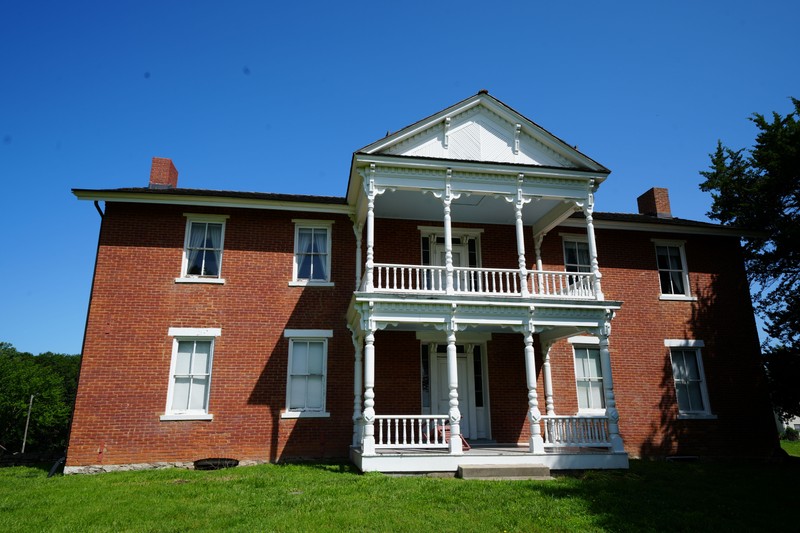
The view of the Kansas River Valley where Grinter operated his ferry
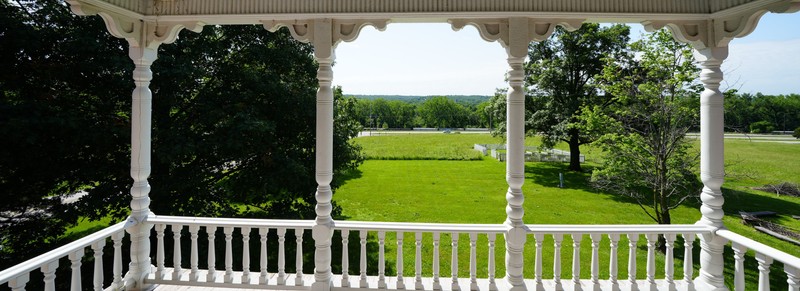
The rear of the home includes a shaded back porch where Annie Grinter prepared meals and smoked her clay pipe
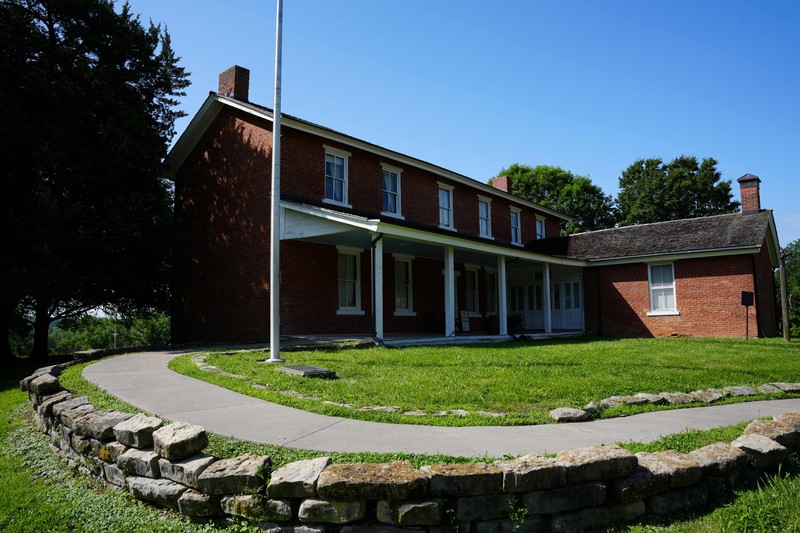
This photo of Moses and Annie Grinter can be found inside the historic home
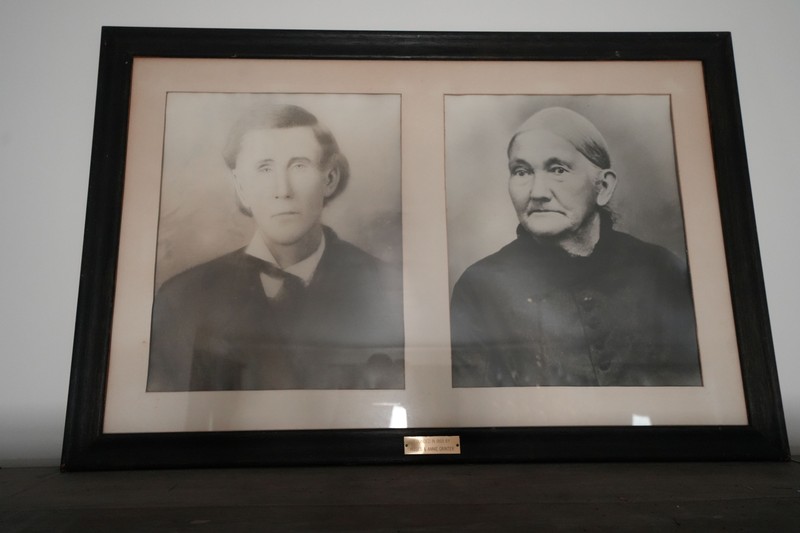
The east bedroom on the second floor would have been used by some of the Grinter's children. The couple had ten children, but not all survived to adulthood.
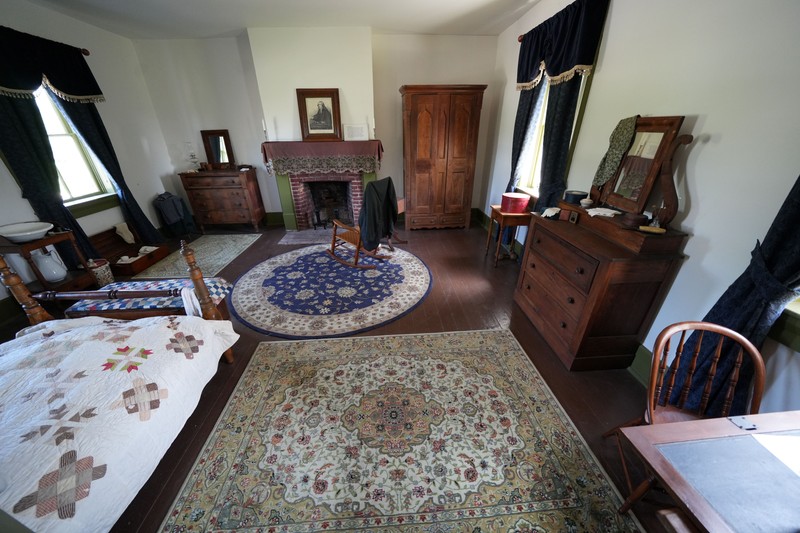
The entrance to the home
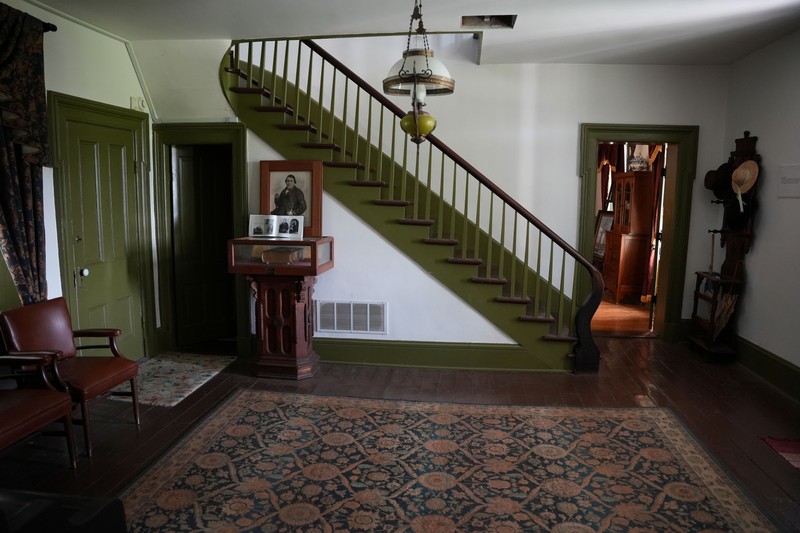
The kitchen is located next to a breezeway that once separated it from the rest of the home
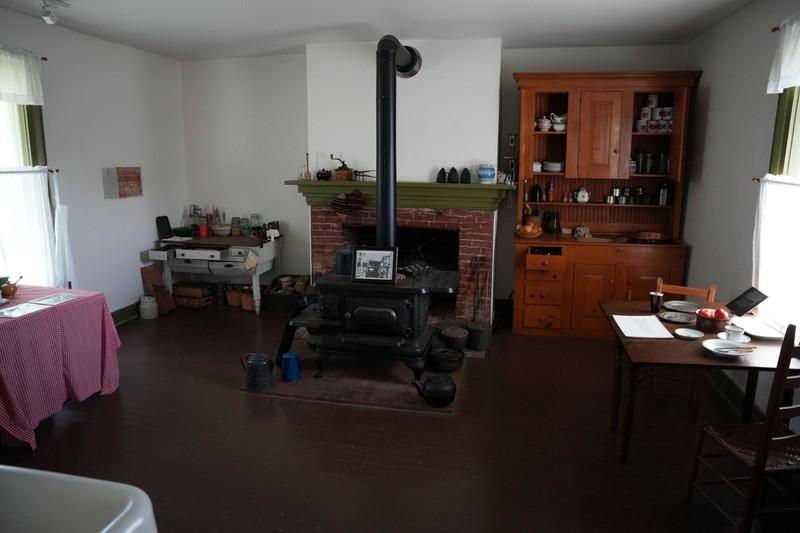
This front room was the dining room in the period when the home housed a restaurant and is decorated to resemble that period of the property's history
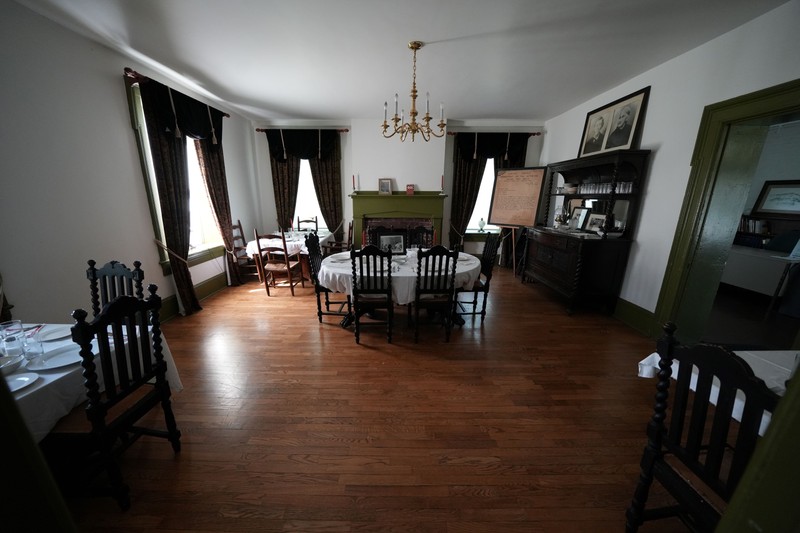
A photo of the restaurant can be found in the front room
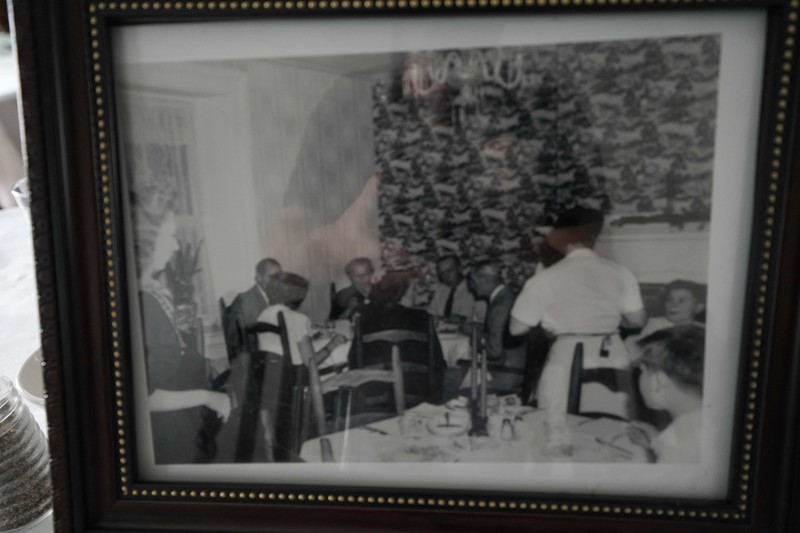
The home includes photos of Grinter family reunions
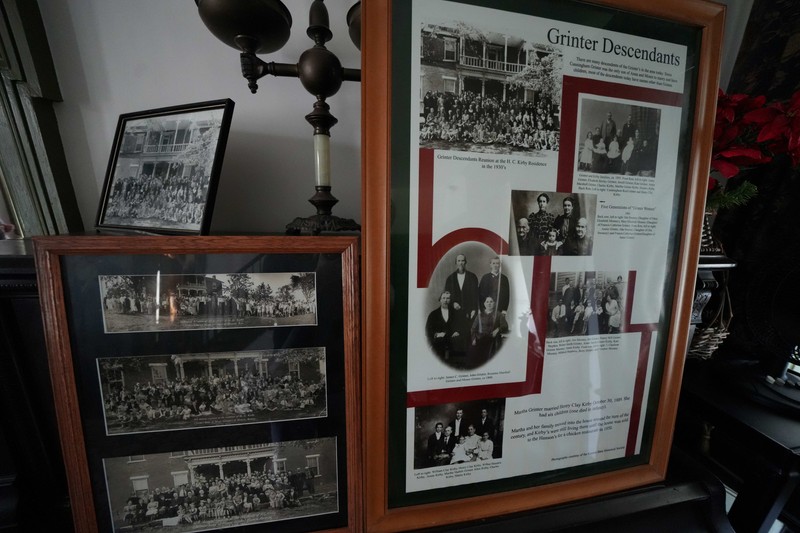
The basement includes a variety of artifacts and is not open to the public

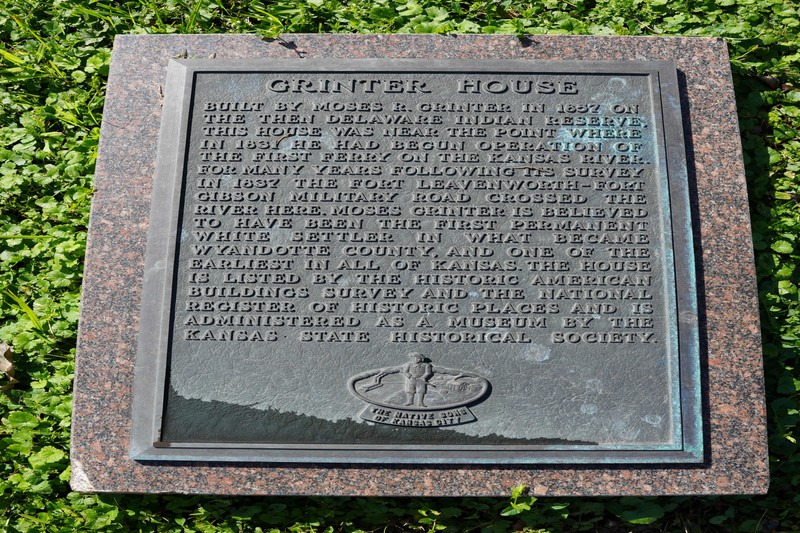
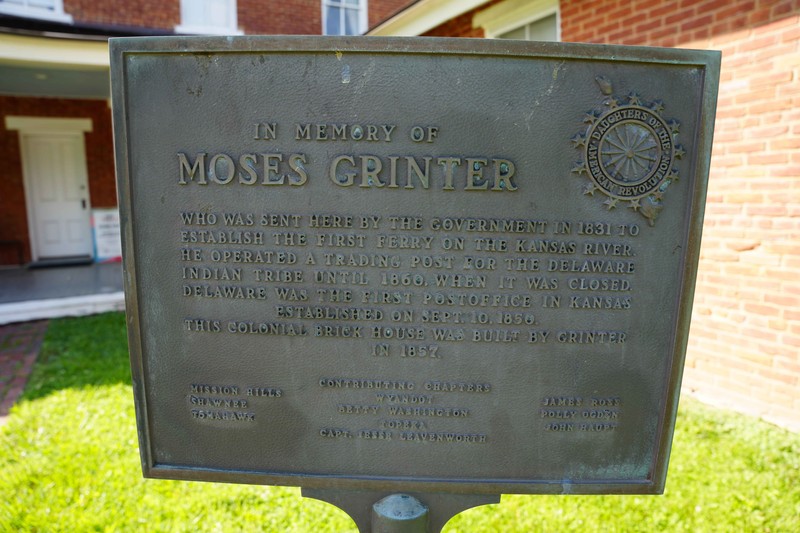
Backstory and Context
Text-to-speech Audio
Moses Grinter became the first white settler of the area when he settled along the north bank of the Kansas River. Some sources have Grinter arriving in Kansas as a solider in 1829, while others say he traveled all the way from Kentucky to settle the site. Either way, Grinter was appointed to operate a ferry from this settlement in 1831 and this would become his life’s work. At first, Grinter's ferry held the modest role of transporting letters and the like across the river being labeled “a tolerably good ferry.” But, as westward expansion blossomed in the antebellum period, Grinter’s ferry and trading post saw increased traffic.
Grinter moved to the area shortly after the Indian Removal Act of 1830. During the period from 1825 to 1843, over 10,000 native Americans were forced from their homes and sent to what would later become Kansas Territory. Grinter’s Ferry was part of the infrastructure needed to carry out this task, transporting people and materials between Fort Leavenworth and Fort Scott. In 1836, federal plans called for the western military road to utilize this ferry. The ferry also supported the work of frontier traders and those who moved westward under their own volition. Families seeking a new life in California and Oregon needed to cross the Kansas River, as did those who sought to occupy lands that had been promised to Native American tribes until the Kansas-Nebraska Act. Grinter expanded his operations to support military traffic, pioneers, and the anticipated influx of settlers. This included construction of the first non-military post office in what would become Kansas in 1850. After the Kansas Nebraska Act "opened" Native land to settlement, Grinter also expanded and operated a trading post that was used by Delaware Indians, soldiers, and pioneers alike. The wealth from his ferry and trading operations allowed Grinter to build this home at the site of his former cabin. A southerner who admired the stately homes of his native Kentucky, Grinter built this two story brick building which resembles a Southern colonial farmhouse.
Moses died in 1878, and Annie in 1905. The couple had ten children, but not all survived to adulthood. Son William Grinter served in the Kansas 15th Cavalry and lived here while operating a farm after the war. Martha Grinter and her husband, Reverend Henry C. Kirby, later lived here. Their heirs would eventually sell the home in 1950 to a family who operated a chicken restaurant in the historic home. This business venture would be shuttered over a decade later. The house would become abandoned, with no clear direction for several years. This changed when conservationists in Friends of Grinter place and the Junior League of Kansas City, Kansas teamed to get the state of Kansas to buy the land, restore the structure, and operate it as a historic site.
Sources
Grinter Place, Kansas Historical Society. February 1st, 2018. Accessed June 2nd, 2024. https://www.kshs.org/kansapedia/grinter-place/11831.
Pankratz, Richard. NATIONAL REGISTER OF HISTORIC PLACES INVENTORY - NOMINATION FORM - GRINTER PLACE, NPSGallery.gov. January 25th, 1971. Accessed June 2nd, 2024. https://npgallery.nps.gov/NRHP/GetAsset/NRHP/71000338_text.
Sachs, David. Grinter Place, Society of Architectural Historians. 2012. Accessed June 2nd, 2024. https://sah-archipedia.org/buildings/KS-01-209-0060.
Grinter House – The House On The Hill, Our Changing Lives. 2018. Accessed June 2nd, 2024. https://www.ourchanginglives.com/grinter-house-the-house-on-the-hill/.
Swiftwater, Thomas. Moses Grinter, Lenape Delaware History. November 13th, 2006. Accessed June 2nd, 2024. http://lenapedelawarehistory.net/mirror/moses_grinter.htm.
Photo by David Trowbridge
Photo by David Trowbridge
Photo by David Trowbridge
Photo by David Trowbridge
Photo by David Trowbridge
Photo by David Trowbridge
Photo by David Trowbridge
Photo by David Trowbridge
Photo by David Trowbridge
Photo by David Trowbridge
Photo by David Trowbridge
